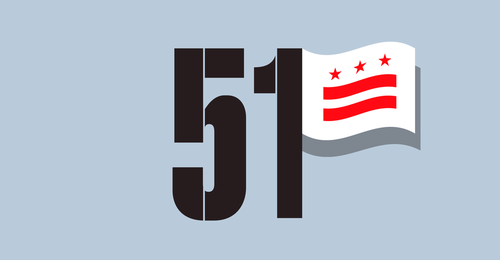Democrats Introduce Senate Bill To Make D.C. The 51st State
Sen. Tom Carper (D-Del.) and other Democratic senators are introducing a bill for D.C. statehood today, a proposal with heavy opposition in the public in continuing polls.
Indeed, the bill was one of the reasons that members and advocates demanded the killing of the filibuster rule to force through the change in status based on a bare majority.
If successful, it would give the Democrats two more senators in a city-state that will expected to remain reliably blue. I have testified repeatedly on this issue. There are strong arguments for changing the status of the District and statehood is a viable option.
It would clearly be constitutional unlike past proposals. The question is whether it is the best option for the country. Roughly 20 years ago, I proposed a “modified retrocession plan” that would be an alternative if the Congress wanted full voting rights for citizens of the District.
The proposal would make create the first city-state in our history with a population of 700,000.
However, half of the country opposes the idea.
A new Harris/Hill poll shows fifty-two percent of respondents said they favored statehood while 48 percent said they opposed it. That is heavy opposition for such a statehood change.
Biden just unveiled another proposal with heavy public opposition: a commission that would allow court-packing or other structural changes on the Court to blunt the conservative majority.
I have written a long academic publication on the status of the District of Columbia and testified at the prior hearings on allowing for voting representation of District residents. See Jonathan Turley, Too Clever By Half: The Partial Representation of the District of Columbia in the House of Representatives, 76 George Washington University Law Review 305-374 (2008). I also testified in both the House and Senate repeatedly on such proposals.
The debate over D.C. statehood is a complex issue with historical, constitutional, and legal dimensions. It is also an issue with important and unresolved racial issues of a black-majority city without direct representation in Congress. I have previously voiced my view that such lack of representation for the District is unacceptable and untenable in our country.
In all, I have testified five times in the House and the Senate on this issue in Congress, particularly on the effort to simply give the District a vote in the House of Representatives. I encouraged the Congress to avoid such flagrantly unconstitutional measures of a vote as a non-state entity and instead focus on a vote of statehood or retrocession. That is why I offered a “modified retrocession plan”, which was also discussed in an academic work. Under my proposal, the mall and core federal buildings would remain the District of Columbia (as is the case in this legislation) but the remainder of the District would retrocede back to Maryland (as did the other half of the original District to Virginia). In this way, residents would receive full representation while receiving the benefits of various Maryland educational and other opportunities. That reduction of the federal enclave has been incorporated in some statehood proposals. I believed that such retrocession offered the fastest course for not just full representation but improved social and educational programs for the district residents. I laid out a phased retrocession plan that began with immediate and full representation. This could be done by congressional vote.
People of good-faith can disagree on such proposals and the current legislation is clearly a constitutional approach to reaching a final resolution on the lack of representation in Congress. Indeed, it is important to hear from those who believe that statehood is an important step toward dealing with the historical racial inequalities and discrimination in our nation. Modified retrocession may not be enough to resolve such issues for many in our community.
https://ift.tt/3r2eMap
from ZeroHedge News https://ift.tt/3r2eMap
via IFTTT





0 comments
Post a Comment